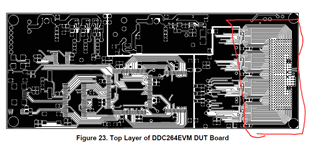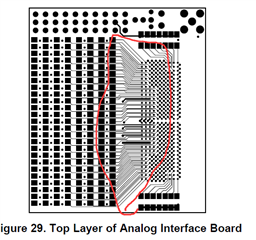Good day,TI Expert.
<1> My customer want to use MCU to control DDC264,but I find out the MCU couldn't run "10Mhz interrupt function" normally to toggle CONV within ±10ns of the falling edge of CLK.
So I want to use Active Crystal Oscillator and Frequency Divider to generate System CLK and CONV signal.What parameter of Active Crystal Oscillator I should notice?In other words,what kind of signal should I provide,like voltage,current,and etc...
<2> And I see that the circuitry between Analog Input and sample connentor aren't snake routing to make same impedance in DDC264EVM board.Will it make a obvious difference in different channel when test same sample? If I try to control the same impedance,what impedance should I set,100ohm ± 10 or ...



